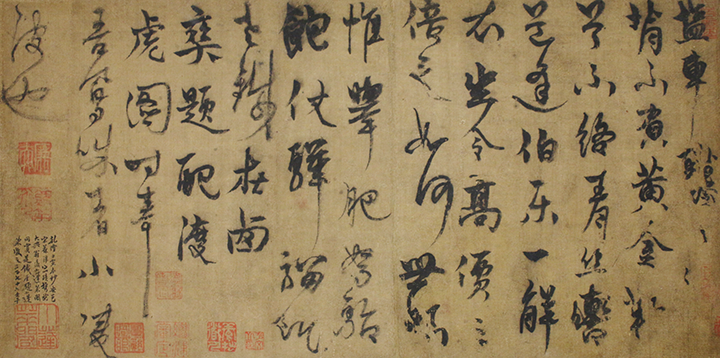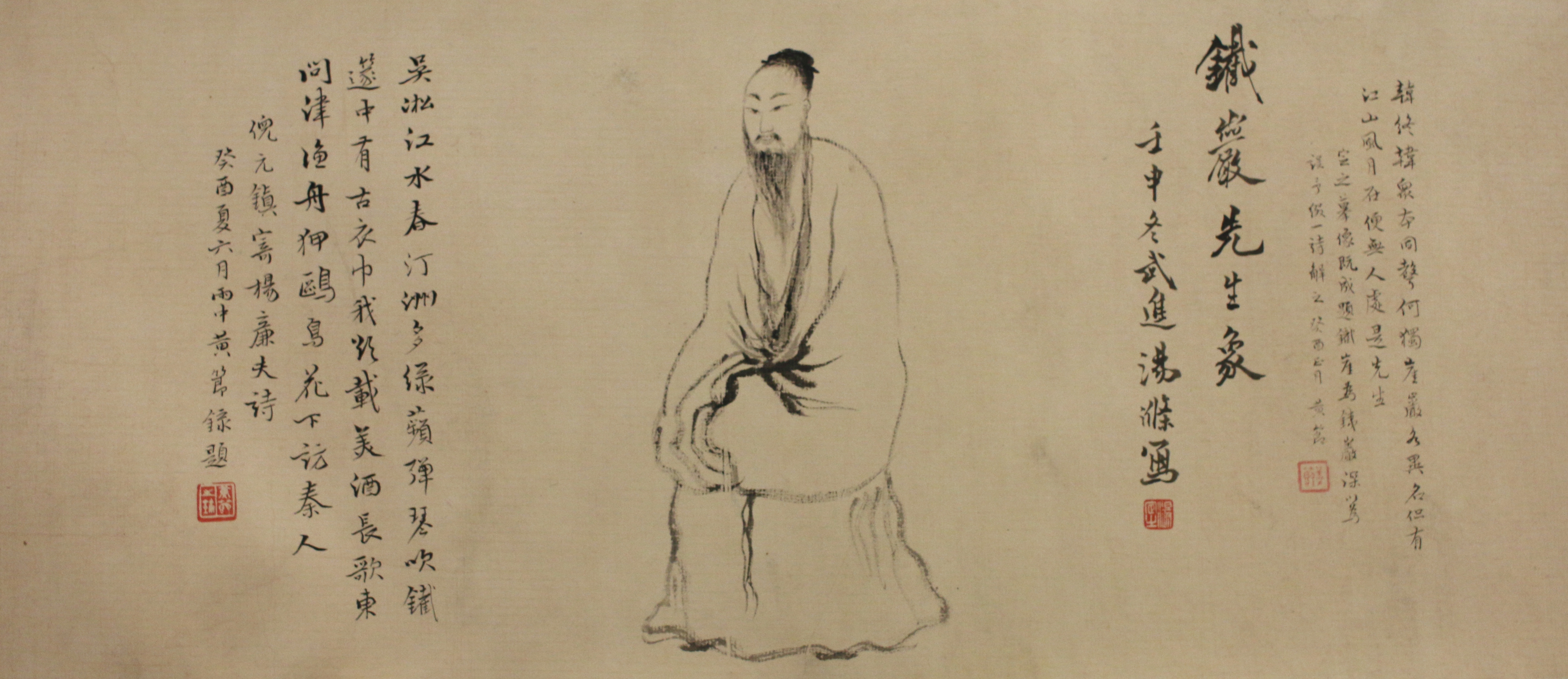$12M Gift of Chinese Calligraphy Transforms Asian Art Collection at U-M Museum of Art
读中文
Yang Weizhen (1296 - 1370), Two Calligraphy of Poetry (detail), Yuan dynasty, handscroll in two sections, ink on silk, 8 ¼ x 13 ¼ inches (first section); 8 ¼ x 16 ½ inches (second section), Gift of Jiu-Fong Lo Chang and Kuei-sheng Chang, University of Michigan Museum of Art
The University of Michigan Museum of Art (UMMA) has received an extraordinary gift of Chinese calligraphy from the family of Lo Chia-Lun 羅家倫 valued at more than $12 million—the largest gift of art in the University of Michigan’s (U-M) history.
The Lo Chia-Lun Calligraphy Collection, donated by his daughter Jiu-Fong Lo Chang and her husband Kuei-sheng Chang, will transform the museum’s Asian art collection, adding an impressive breadth of works to an already stellar collection of Chinese paintings and ceramics.
Lo Chia-Lun (1897-1969) was a student leader in China’s “May Fourth Movement” and became a prominent government official in Nationalist China as well as a scholar, calligrapher, poet, and president of two major universities—National Central University and Tsinghua University. The Lo Chia-Lun Calligraphy Collection will contribute significantly to contemporary scholarship on Yuan and Ming dynasty calligraphy, and includes master pieces by Yang Weizhen (1296-1370), Wang Shouren (1472-1529), Wen Zhengming (1470-1559), and Wang Duo (1592-1652), among others. The collection also represents an extraordinary contribution to the study of Chinese cultural history, as it includes pieces from many cultural leaders of the early 20th century, including Cai Yuanpei (1868-1940), Chen Duxiu (1879-1942), and Shen Yinmo (1883-1971), as well as later artists Xu Beihong (1895-1953) and Zhang Daqian (1899-1983). The collection preserves important evidence of cultural pursuits among these notable historical figures, while also reflecting the tastes and intellectual exchanges among leading intellectuals in the early 20th century.

This remarkable gift to UMMA is the result of a long relationship between the Lo family and U-M, and builds upon their history of philanthropy including previous gifts of Chinese art. Lo Chia-Lun’s wife, Djang Wei-djen (MA ‘27), earned a master's degree in political science at U-M on a Barbour Scholarship—one of U-M’s oldest and most prestigious awards, offering funding to female students from Asia and the Middle East since 1917. Their daughters, Jiu-Fong Lo Chang (MA ’57, PhD candidate) and Jiu-Hwa Lo Upshur (MA ’61, PhD ’72), also attended graduate school at U-M as Barbour Scholars; their son-in-law Kuei-sheng Chang (MA ’50, PhD ’55) earned a masters degree and PhD in geography from U-M. In the past decade, Jiu-Hwa Lo Upshur has endowed a scholarship in her father’s name at the Rackham Graduate School and created internship endowments at UMMA.
Jiu-Fong Lo Chang said of the calligraphy collection, “This gift honors not only the legacy of my father, but it also recognizes our family’s deep roots at Michigan and our gratitude for the opportunities U-M afforded us at a time when few Chinese students had the privilege of studying abroad," Jiu-Fong Lo Chang said of the calligraphy collection.
UMMA will partner with U-M faculty and global scholars to research and interpret the works in the collection for major exhibitions and collections installations in the coming years.
"The Lo Chia-Lun Collection will have a major impact on U-M and UMMA, in terms of both research and scholarship on Chinese calligraphy and our ongoing outreach to Michigan's large Chinese community," said Ann Lin, the Lieberthal-Rogel Professor of Chinese Studies and director of the U-M Lieberthal-Rogel Center for Chinese Studies.
The calligraphy collection numbers 72 pieces, dating to the Yuan, Ming and Qing dynasties and the Republican Period, including some of the finest examples of Chinese calligraphic works outside of China. The gift also includes several seals, ink stones and other objects from Chinese literati culture.
"The addition of the Lo Chia-Lun Collection will be transformative for UMMA's Asian art program," said UMMA Director Christina Olsen. "It will significantly deepen UMMA's holdings of Chinese calligraphy and will add depth and perspective to other UMMA artworks, enabling a more complete portrayal of Chinese art for museum visitors. UMMA is extremely grateful to continue the legacy of the Lo family and to share this rich and beautiful collection with the world."

Yang Weizhen (1296 - 1370), Two Calligraphy of Poetry (detail), Yuan dynasty, handscroll in two sections, ink on silk, 8 ¼ x 13 ¼ inches (first section); 8 ¼ x 16 ½ inches (second section), CREDIT LINE, University of Michigan Museum of Art
